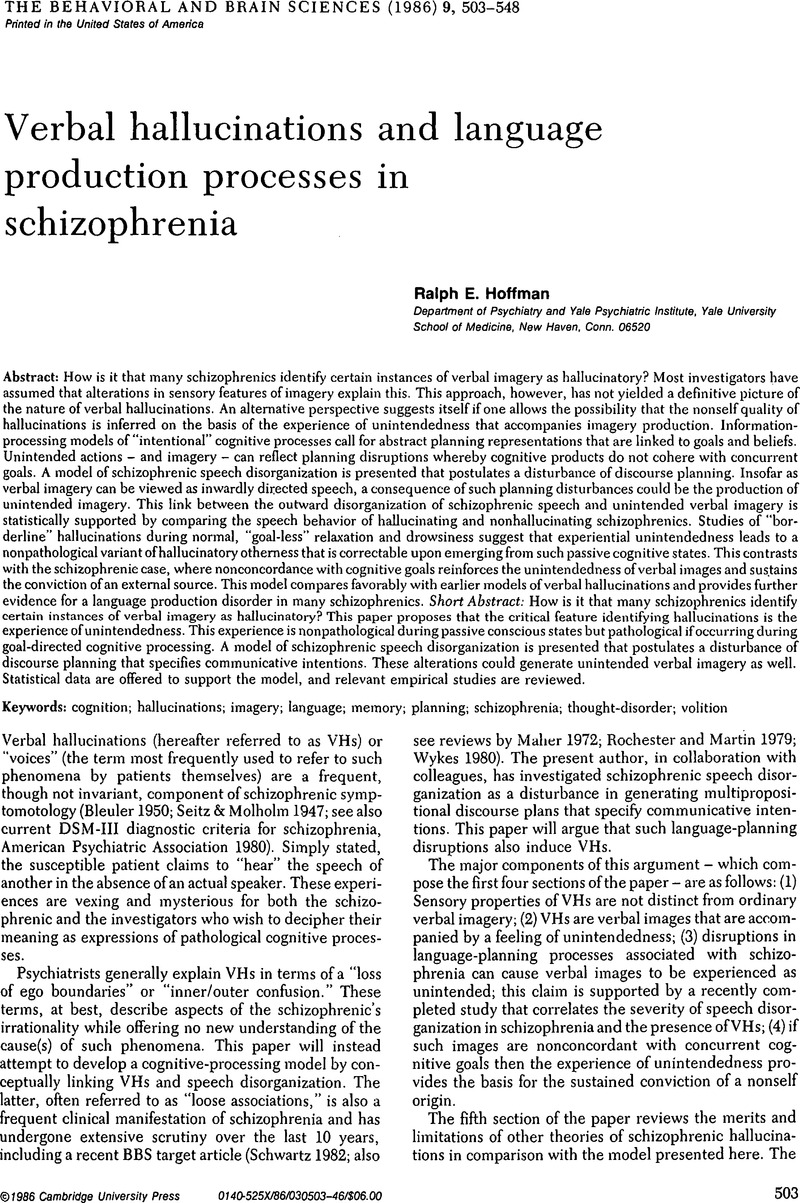Crossref Citations
This article has been cited by the following publications. This list is generated based on data provided by Crossref.
Larøi, Frank
and
Woodward, Todd S.
2007.
Hallucinations from a Cognitive Perspective.
Harvard Review of Psychiatry,
Vol. 15,
Issue. 3,
p.
109.



